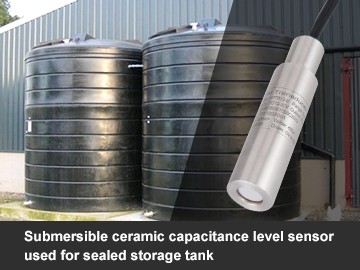Submersible ceramic capacitance level sensor used for sealed storage tank
Measuring the level of a sealed storage tank is not as difficult as you think. The use of the submersible ceramic capacitance level sensor can not only solve the problem of high pressure in the sealed tank, but also the viscosity of the underground tank is free of cleaning. Although there are a few people do not know the name of the sensor and specific role, but it is undeniable that it is the real "high pressure resistance" of the level sensor.
In order to let more people know about the submersible ceramic capacitance level sensor, I'm going to break it down from the actual working conditions. In recent years, with the rapid development of industry, all kinds of industrial tanks and sealed storage tanks are used for the storage of most industrial medium, among which the most are chemistry and petroleum. Not only do these two medium require high quality sealed storage tanks, but the pressure and level measurements in the tanks are even more overwhelming. Different from conventional storage tanks, tightly sealed storage tanks are designed to prevent the evaporation of chemical and oil vapor, to prevent the outside water from entering the tank and affecting oil products, or to prevent the overflow of highly corrosive gases. At this time, the absolute pressure of the medium will affect the accuracy and stability of most sensors, and may lead to sensor damage. The submersible ceramic capacitance level sensor USES a ceramic core that can resist 10 times the blasting pressure. Moreover, the designer fully considers the bad working condition of the underground storage tank. Even if the sensor is completely immersed in the viscous medium, it is free of cleaning and will not affect the accuracy (0.1FS %).
From the actual working conditions, we can see that the submersible ceramic capacitance level sensor is the best way to seal the storage tank with high precision and high compressive resistance.






